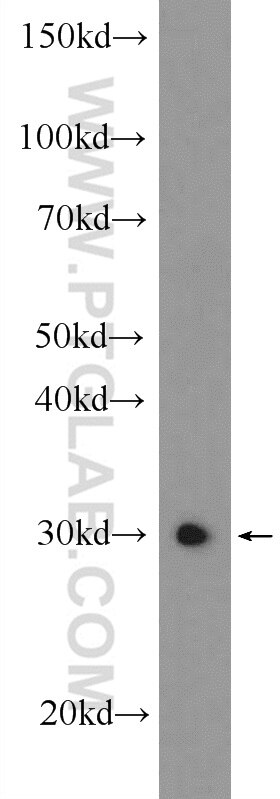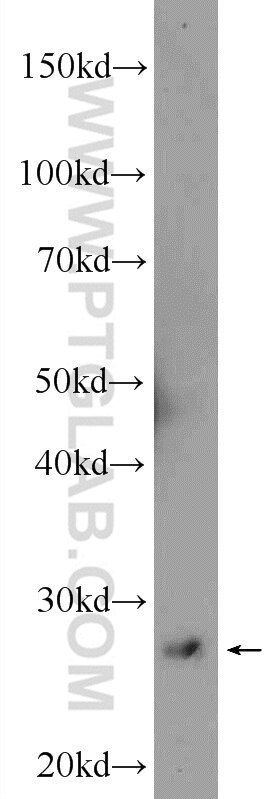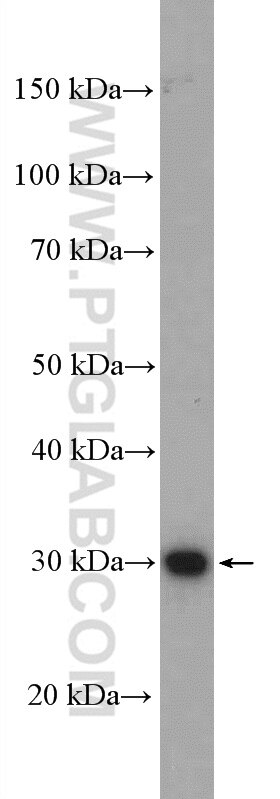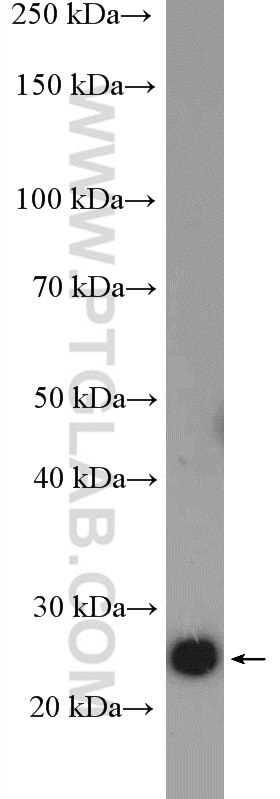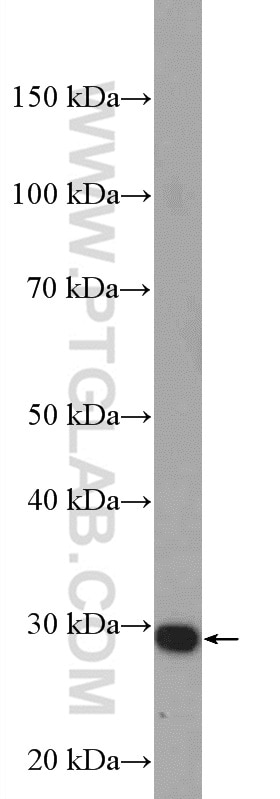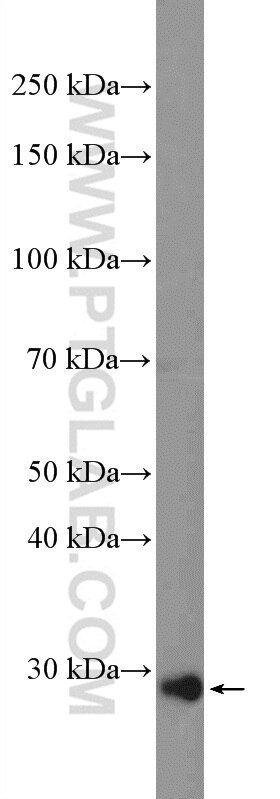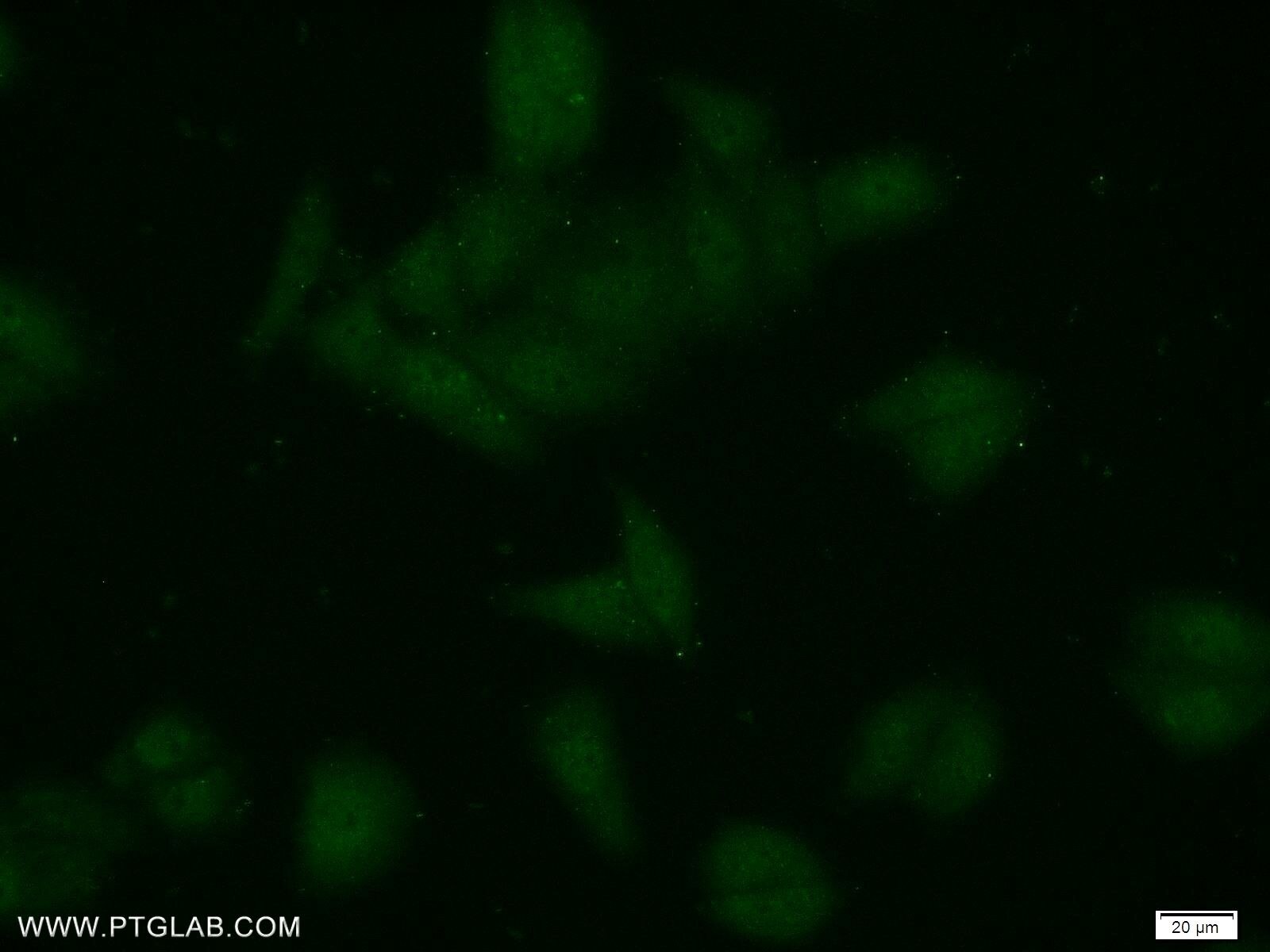ZCRB1 Polyklonaler Antikörper
ZCRB1 Polyklonal Antikörper für IF, WB,ELISA
Wirt / Isotyp
Kaninchen / IgG
Getestete Reaktivität
human, Maus
Anwendung
WB, IF, ELISA
Konjugation
Unkonjugiert
Kat-Nr. : 25629-1-AP
Synonyme
Galerie der Validierungsdaten
Geprüfte Anwendungen
| Erfolgreiche Detektion in WB | Maushodengewebe, Neuro-2a-Zellen, Raji-Zellen, SMMC-7721-Zellen |
| Erfolgreiche Detektion in IF | HepG2-Zellen |
Empfohlene Verdünnung
| Anwendung | Verdünnung |
|---|---|
| Western Blot (WB) | WB : 1:500-1:1000 |
| Immunfluoreszenz (IF) | IF : 1:20-1:200 |
| It is recommended that this reagent should be titrated in each testing system to obtain optimal results. | |
| Sample-dependent, check data in validation data gallery | |
Veröffentlichte Anwendungen
| WB | See 1 publications below |
Produktinformation
25629-1-AP bindet in WB, IF, ELISA ZCRB1 und zeigt Reaktivität mit human, Maus
| Getestete Reaktivität | human, Maus |
| In Publikationen genannte Reaktivität | human |
| Wirt / Isotyp | Kaninchen / IgG |
| Klonalität | Polyklonal |
| Typ | Antikörper |
| Immunogen | ZCRB1 fusion protein Ag22095 |
| Vollständiger Name | zinc finger CCHC-type and RNA binding motif 1 |
| Berechnetes Molekulargewicht | 217 aa, 25 kDa |
| Beobachtetes Molekulargewicht | 25-30 kDa |
| GenBank-Zugangsnummer | BC022543 |
| Gene symbol | ZCRB1 |
| Gene ID (NCBI) | 85437 |
| Konjugation | Unkonjugiert |
| Form | Liquid |
| Reinigungsmethode | Antigen-Affinitätsreinigung |
| Lagerungspuffer | PBS mit 0.02% Natriumazid und 50% Glycerin pH 7.3. |
| Lagerungsbedingungen | Bei -20°C lagern. Nach dem Versand ein Jahr lang stabil Aliquotieren ist bei -20oC Lagerung nicht notwendig. 20ul Größen enthalten 0,1% BSA. |
Protokolle
| Produktspezifische Protokolle | |
|---|---|
| WB protocol for ZCRB1 antibody 25629-1-AP | Protokoll herunterladen |
| IF protocol for ZCRB1 antibody 25629-1-AP | Protokoll herunterladen |
| Standard-Protokolle | |
|---|---|
| Klicken Sie hier, um unsere Standardprotokolle anzuzeigen |
Publikationen
| Species | Application | Title |
|---|---|---|
J Exp Clin Cancer Res A novel protein encoded by ZCRB1-induced circHEATR5B suppresses aerobic glycolysis of GBM through phosphorylation of JMJD5. |
